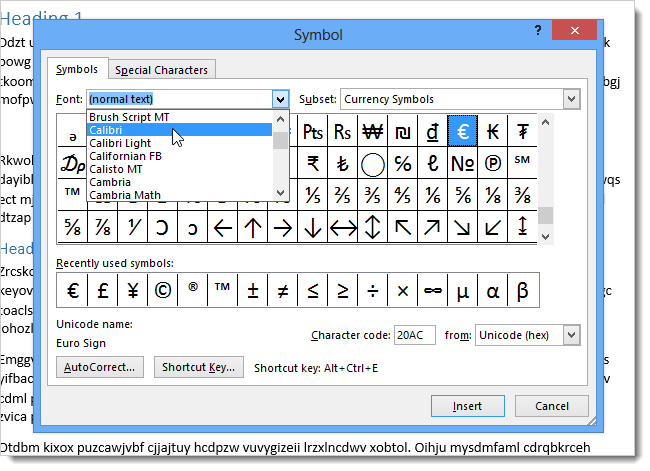Microsoft Word Symbol Font

Symbol is one of the four standard fonts available on all -based printers, starting with 's original (1985). It contains a complete unaccented (upper and lower case) and a selection of commonly used mathematical symbols. Insofar as it fits into any standard classification, it is a font designed in the style of.
Due to its non-standard character set, lack of diacritical characters, and type design inappropriate for continuous text, Symbol cannot easily be used for setting text, though it has been used for that purpose in the absence of proper Greek fonts. Its primary purpose is to typeset expressions. Contents • • • • • • • Encoding [ ] The font was created by Adobe and has its own, with the Greek letters arranged according to similar Latin letters ( =, etc.). The document describing the mapping to Unicode code points was created before several of the characters were added to Unicode, so the original mapping assigns several of the characters to the (PUA). Garmin City Navigator Europe Nt 2008 Nordic Version. A later version of the font by uses more recently introduced Unicode code points instead. Erdas Imagine Version 9.1. The table below mostly follows the Apple mapping. • The character at 0x60 does not appear in Unicode.
Hundreds of symbols that are not available on your keyboard are provided in Microsoft Word for. How to Use Symbols in Word. Fonts in the Symbol. Not all fonts are 'complete' Unicode fonts. Ben 10 Game Setup there. Word is probably changing the font because it's the only way it can create the particular symbol you inserted. Typographic info for the Symbol font family. Typographic info for the Symbol font family Symbol font. License Microsoft fonts for enterprises.
It is described in the Adobe map as ' ', with the Adobe glyph name 'radicalex', and is mapped to the PUA code point U+F8E5. It is an over-bar for extending the radical sign over the operands of the radical operator.
Some versions of the font implement this as a non-spacing character so that it can be combined (like non-spacing diacritical marks) with the operands it covers. • ^ The characters ®, ©, and ™ are encoded twice: one version has, the other is.
The Adobe mapping uses PUA for all six characters to ensure that the presence or absence of serifs is observed, while the Apple font maps the serif versions to the standard Unicode code points and the sans-serif versions to PUA code points (but not the same ones Adobe used). References [ ].